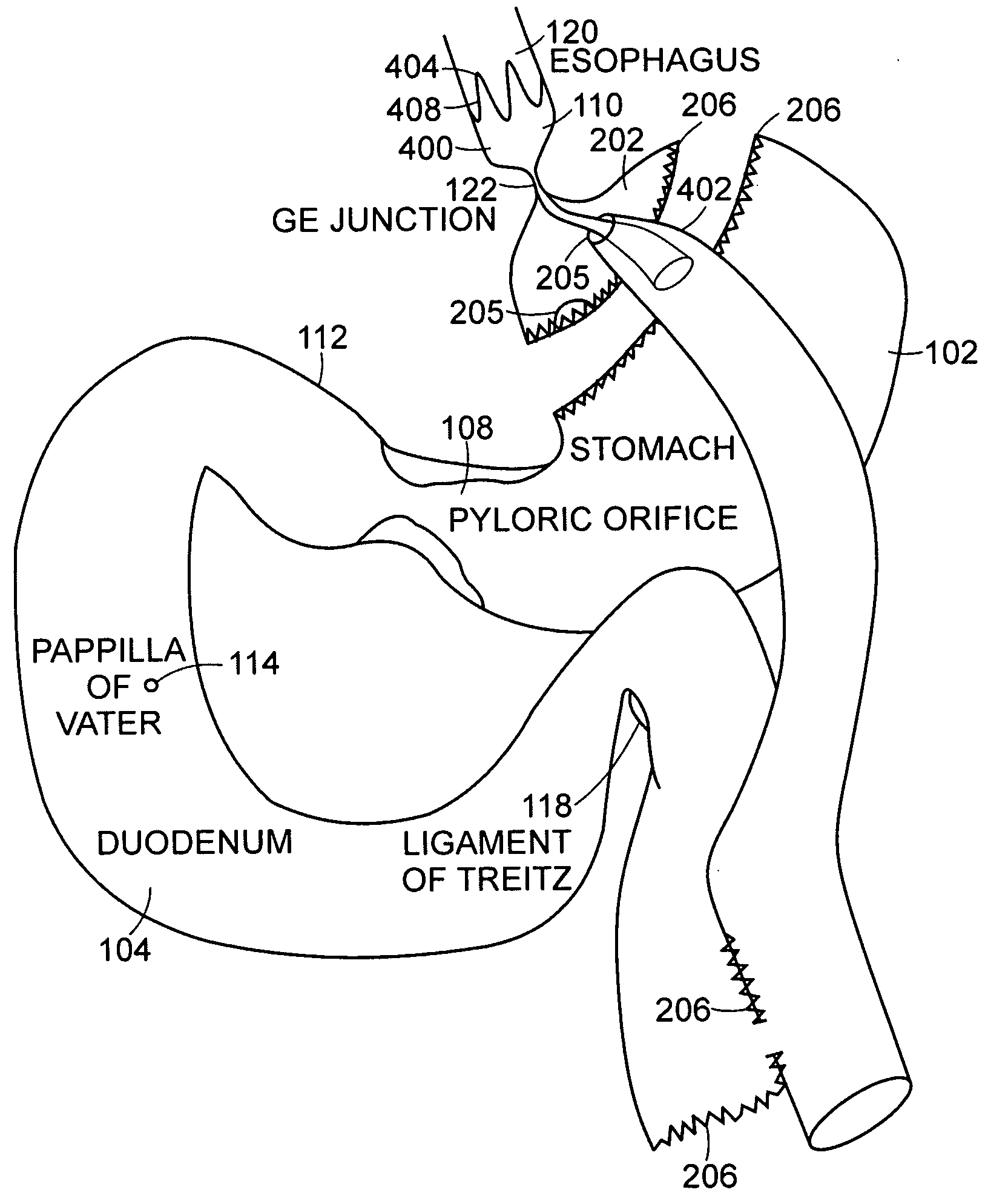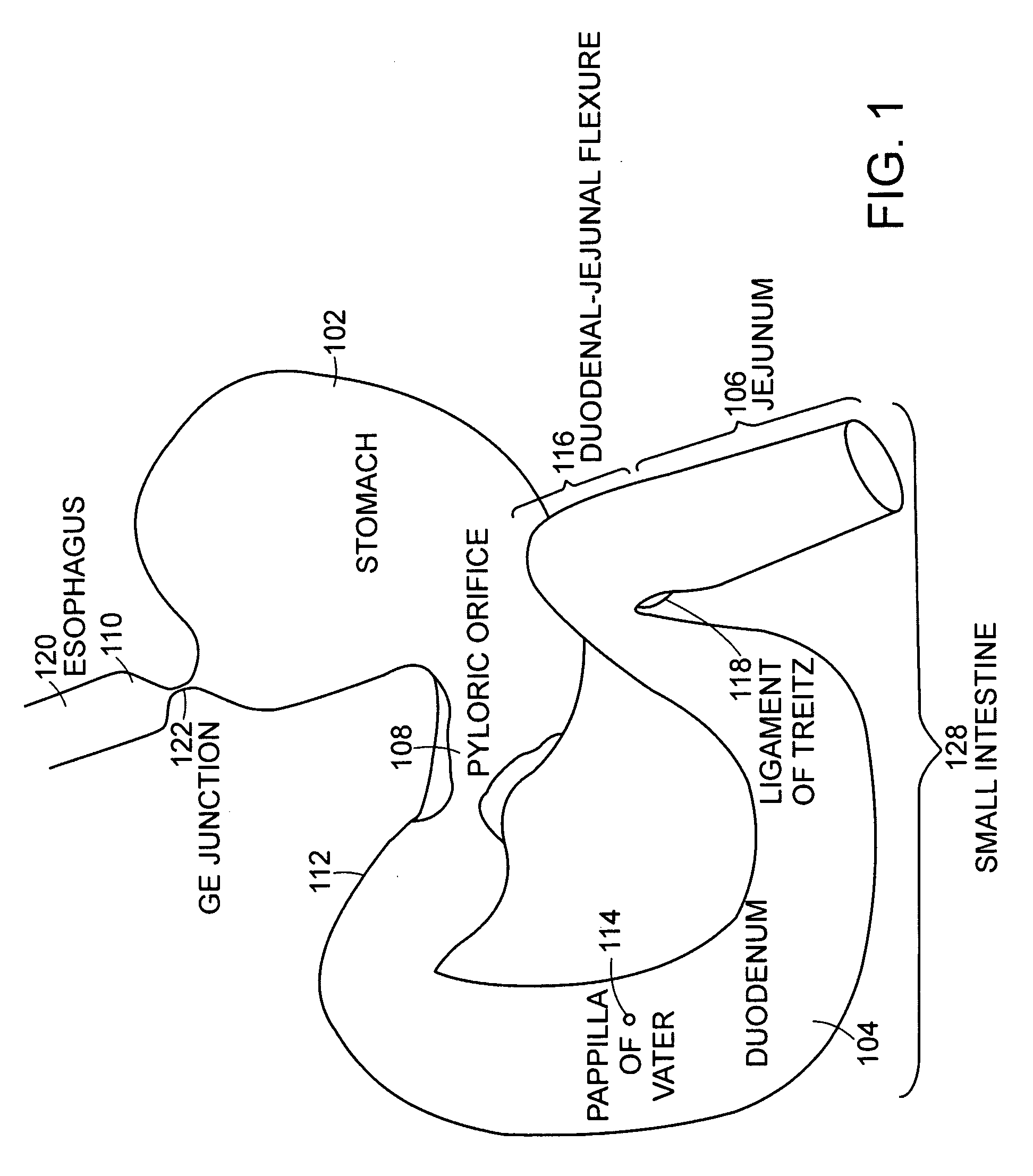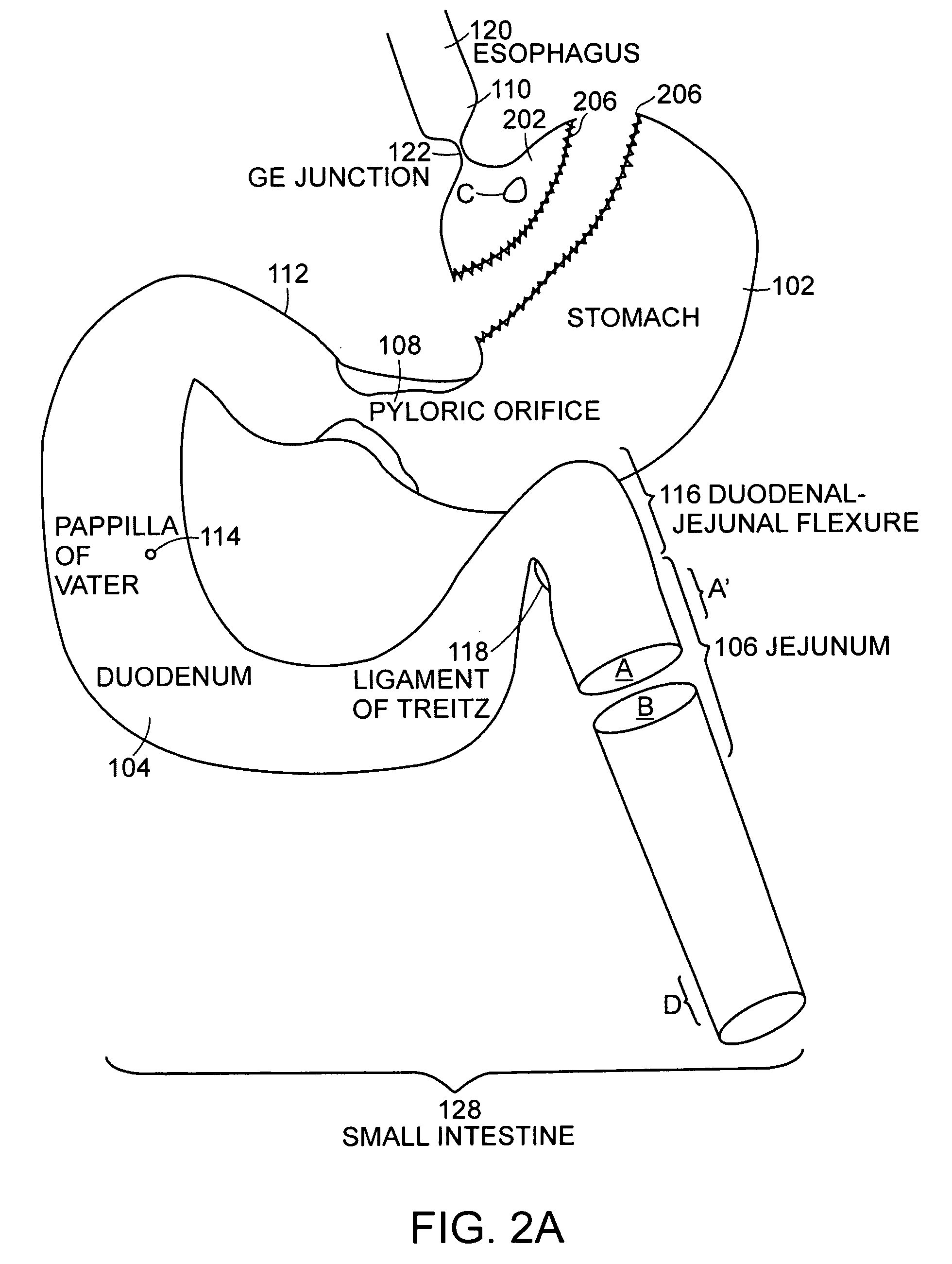Use of a gastrointestinal sleeve to treat bariatric surgery fistulas and leaks
- Summary
- Abstract
- Description
- Claims
- Application Information
AI Technical Summary
Benefits of technology
Problems solved by technology
Method used
Image
Examples
Embodiment Construction
[0034]A description of preferred embodiments of the invention follows.
[0035]A fistula is an abnormal connection between organs. Fistulas and leaks can occur as a result of bariatric surgery, in particular after a Roux-en-Y gastric bypass procedure. A gastrointestinal implant device is anchored in the esophagus and extends through a stomach pouch into an intestine anastomosed to the stomach pouch to prevent fistulas and other damaged tissue from making contact with food and / or fluids entering the esophagus, thus enabling healing of the damaged tissue.
[0036]FIG. 3 is a sectional view of a body showing one embodiment of the gastrointestinal implant device 400 implanted in the esophagus, preferably just above the GE Junction 122. The device 400 includes an anchor and a sleeve. The anchor may have drawstrings to facilitate the removal of the implant device 400. The anchor has a relaxed diameter of 0.7-1.5 inches (20-40 mm). The sleeve attached to the anchor may be at least 6 inches (150 ...
PUM
 Login to View More
Login to View More Abstract
Description
Claims
Application Information
 Login to View More
Login to View More - R&D
- Intellectual Property
- Life Sciences
- Materials
- Tech Scout
- Unparalleled Data Quality
- Higher Quality Content
- 60% Fewer Hallucinations
Browse by: Latest US Patents, China's latest patents, Technical Efficacy Thesaurus, Application Domain, Technology Topic, Popular Technical Reports.
© 2025 PatSnap. All rights reserved.Legal|Privacy policy|Modern Slavery Act Transparency Statement|Sitemap|About US| Contact US: help@patsnap.com



